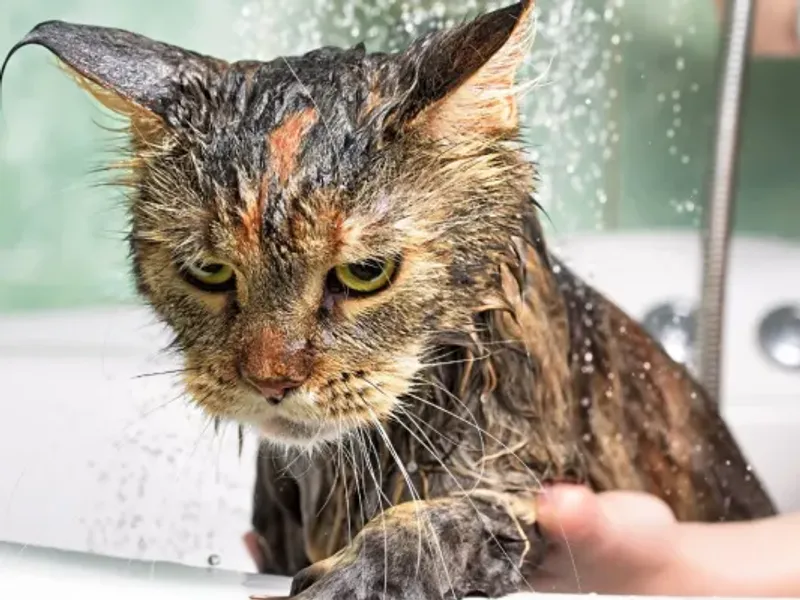Why Do Cats Hate Water?

Have you ever tried to bathe your cat and it bolted as if it were the end of the world? You are not alone. Most cats show a notable aversion to water, but why does this happen? Let’s discover it from the perspective of science, evolution, and feline behavior to better understand our companions.
1. Evolutionary Origin: Desert Cats
The direct ancestor of today’s domestic cats is the African wildcat (Felis lybica), a feline adapted to arid and desert environments. In its habitat, water was scarce and rarely something to interact with.
This genetic legacy explains why modern cats are not naturally inclined to get wet or swim. They did not develop anatomical features such as webbed feet or waterproof fur, making water an unfamiliar and unfriendly environment for them.
2. Unpleasant Physical Sensations
A cat’s fur does not repel water like that of some dog breeds. When wet, it retains a lot of water, causing a feeling of heaviness, cold, and vulnerability.
Additionally, cats are extremely sensitive to touch. Their whiskers and paw pads are full of nerve endings, so contact with water can be overwhelming. The temperature, movement of water, or even the pressure of a drop can be enough to provoke rejection.
3. Loss of Control and Security
Cats are animals that value control over their environment. Water, when covering their paws or body, can limit their mobility, prevent them from climbing or escaping, and that makes them feel insecure.
In a watery environment, their physical abilities are compromised. This generates stress and distrust, especially in situations where water has been imposed on them (like a forced bath). For them, loss of agility equals loss of control and, therefore, greater perceived risk.
4. Previous Negative Experiences
A single traumatic event can leave a lasting mark. If a cat has been bathed abruptly, slipped in a tub, or been splashed unexpectedly, it is likely to associate water with something negative.
Cats have a very well-developed associative memory. This means that a bad experience with water can condition their future reaction, generating fear, anxiety, or aggression when facing similar situations.
Do All Cats Hate Water?
Not necessarily. Although most avoid it, there are breeds like the Turkish Van, Maine Coon, and Bengal that show greater tolerance or even enjoy water.
This may be due to their genetic origin or early socialization where water was introduced as something positive. In general, the earlier a cat is exposed to water gradually and without force, the easier it will be for them to tolerate or accept it.
Is It Necessary to Bathe a Cat?
In most cases, it is not necessary to bathe a cat. They are extremely clean animals and spend hours grooming themselves. However, there are specific situations where a bath may be recommended:
- When the cat comes into contact with toxic or hard-to-remove substances
- In cases of skin diseases or parasite infestations
- If indicated by the vet for medical reasons
Whenever it is necessary to bathe a cat, it should be done with lukewarm water, products specific for felines, and immediate drying with a soft towel or silent-mode hairdryer.
Can a Cat Get Used to Water?
Yes, although it is not guaranteed with all cats. The process must be gradual, respectful, and always positive. Some tips:
- Introduce water through play: let them explore a faucet, bowl, or fountain
- Avoid wetting their head or ears
- Do it in a calm environment, without noise or interruptions
- Reward with affection or treats after each approach
- Always respect their signals: if they become agitated or run away, stop
With patience, some cats can learn to tolerate or even enjoy water, especially if it’s associated with pleasant experiences.
Conclusion
Cats don’t hate water out of whim, but for reasons deeply rooted in their evolution, physiology, and experience. Understanding these helps us treat them with greater empathy and avoid situations that might cause them fear or stress.
If your cat avoids water, respect its nature. And if you ever need to bathe it, do so with preparation, calmness, and affection. A secure cat is a happy cat.


